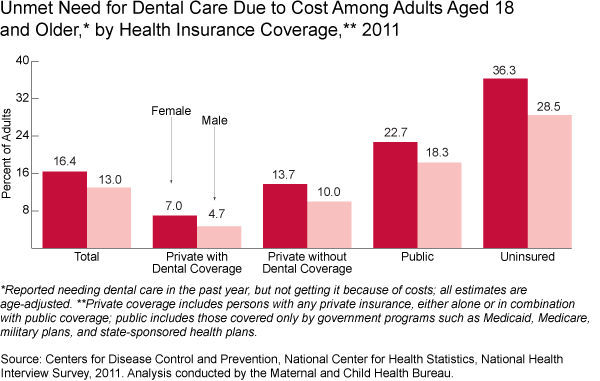There are three major sources of dental reimbursement in the United States, including public funds (6 percent), out-of-pocket payments (44 percent), and employer-based private insurance (50 percent). The latter comprises five different types of plans: indemnity plans, preferred-provider organization plans (PPOs), discount plans, direct reimbursement plans, and capitation plans. About 19 percent of employer-based private insurance comes in the form of dental-capitation plans.1
Dental-capitation insurance plans have been in existence since 1954. Dental-capitation plans involve participating solo general dentists or dental groups contracted by insurance companies to provide a comprehensive, pre-set menu of dental services for a certain number of members. In return, the insurance companies pay each contracted dentist or dental group a set monthly payment (capitation amount) for each plan member assigned to that dentist or dental group plus copayments (if any) made by the plan member to the dentist or dental group at the time of service.
In a somewhat outdated report (2009), but the only one I could find, the mean monthly capitation amounts paid by the insurance company for each assigned plan member declined at a mean rate of 3.2 percent each year, for a total decline of 37.9 percent from 1996 through 2008. The mean capitation amounts plus copayments declined at a mean rate of 1.6 percent each year, for a total decline of 19.6 percent from 1996 through 2008. During this time, the mean office overhead expenses of the typical solo practitioner in the U.S. increased at a mean rate of 3.8 percent per year, resulting in a total increase of 46.1 percent from 1996 through 2008. I am assuming these trends have continued through today.
As the office overhead expenses of participating dentists or dental groups went up, the capitation amounts paid to participating dentists went down. Hence, the amount of income received by the solo general practitioners or dental group for providing a capitation service or treating a capitation patient was less than the mean office overhead expense they had for providing the service or treating the patient. This means that fewer and fewer dentists signed up as providers for capitated plans.
But powerful forces are beginning to push for capitation. Why? Because the fee-for-service model is failing to increase levels of access and reduce incidence, and severity of disease, and costs for dental non-treatment are steadily increasing.

Capitation has two intentions; to control costs, and to manage disease in a select population (hence the name “managed care.”)
The first reason to utilize capitation is to control healthcare costs. The purpose of capitation payments is to control use of dental resources by putting the dentist at higher financial risk for services provided to the patient. At the same time, to ensure that patients are not receiving suboptimal care through under-utilization of dental services, insurance companies measure rates of resource utilization in dental practices.
Capitation is a fixed amount of money per patient per unit of time, paid in advance to the dentist. The actual amount of money paid is determined by the range of services provided. Capitation rates are developed using regional costs and average utilization of services.
Often a risk pool is established as a percentage of the capitation payment. Money in this risk pool is withheld from the dentist until the end of the fiscal year, and if the plan does well financially, the money is paid to the dentist; if the plan does poorly, the money is withheld to pay for deficit expenses.
The second purpose is to reduce the incidence and severity of disease in a select population. The less disease in a population, the fewer procedures required, the more money the dentist makes. The focus becomes on disease management and prevention rather than disease repair, which is costly.
Until now, how to manage disease in select populations was difficult to ascertain. But with AI, cloud computing, Big Data, evidenced-based diagnostic and treatment planning software, operatory usage metrics, and advanced diagnostic protocols and processes, it will be easier to make accurate judgments about treatments for various demographic groups. Also, with the ability to measure outcomes, it will be simpler to establish best practices.
Lastly, with costs increasing at about 3 to 4 percent per year for dental care — which further decreases access — and the expanding knowledge of the relationship of oral health to systemic disease, the writing is on the wall. Capitation in dentistry will move from less than 20 percent to more than 60 percent of dentistry payments in the coming years.
Solo-practice economics is based on a fee-for-service model. As capitation becomes the major reimbursement method, solo practices will be unable to remain viable. Group practices will struggle as well, but with their resources and economies of scale, they are far better suited to adjust to a capitated environment and remain stable.
References: http://www.ajmc.com/journals/issue/2010/2010-11-vol16-n11/ajmc_10_novrhodeswebx_e276
— Marc



